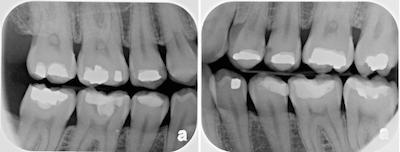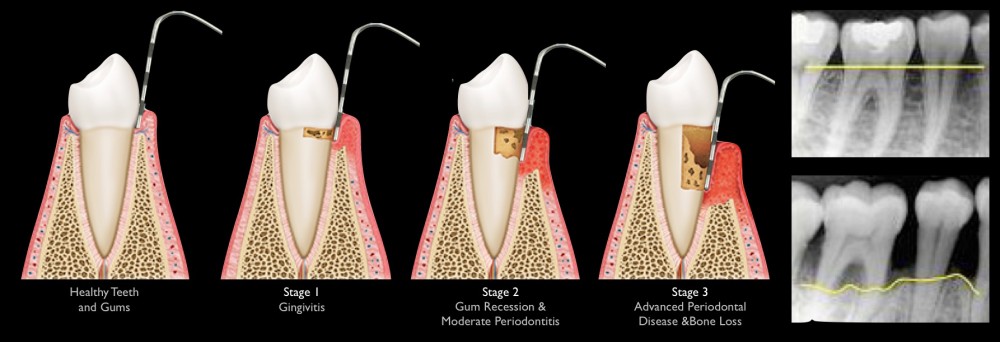What are bitewing x-rays?

Bitewing x-rays show the upper and lower back teeth and how the teeth touch each other in a single view. They do not display the complete tooth and at best show only the top two thirds. These x-rays are used to check for decay between the teeth. Existing fillings can be seen and evaluated for decay. Bitewing x-rays are taken to help see the crowns of the posterior teeth as well as the bone between the teeth. The bone level is assessed by comparing the height of the bone relative to the point where the crown of the tooth joins the root of the tooth (cemento-enamel junction). A change in bone level can indicate disease and the extent of bone height changes can provide an ideal of the severity of gum disease or dental infection.

Alveolar bone loss
As periodontal disease progresses, more of the bone that supports the tooth is lost. Tooth mobility increases with more bone loss until the tooth is lost.
Routine bitewing radiographs are commonly used to examine for interdental decay and recurring decay under your existing restorations. Because bitewing views are taken from a more or less perpendicular angle to the cheek surface of the teeth, they more accurately exhibit the bone levels than do periapical views. Bitewing x-rays of the front teeth are not routinely taken.

Bitewing series
Successive bitewings can track the development of dental decay and indicate the progress of the infection in a tooth
The name bitewing refers to a little tab of paper or plastic situated in the centre of the X-ray film, which when bitten on, allows the film to hover so that it captures an even amount of upper and lower information.









